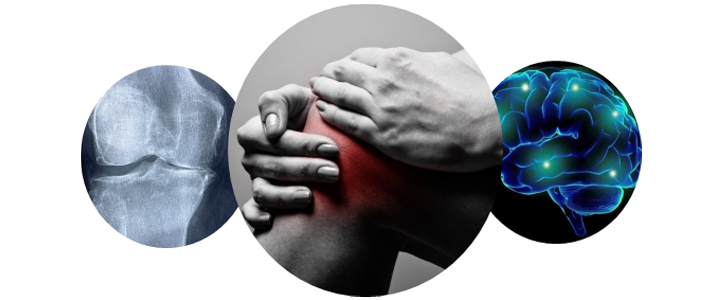Understanding phenotypes of osteoarthritis (OA)
Hosted by Professor Weiya Zhang
 Pain Centre Versus arthritis held a virtual external scientific meeting on 19 October 2020. Several international experts in OA phenotypes presented their research in this area. Professor Tuhina Neogi, Boston University overviewed the current literature and landmark studies in the area including pain and structure phenotypes in OA. This was followed by three cohort studies looking into pain phenotypes in OA, including the Understanding Pain and Limitations of Osteoarthritic Disease (UPLOAD) study presented by Dr Yenisel Cruz-Almeida from the University of Florida, the Multicenter OA (MOST) Study presented by Dr Lisa Carlesso McMaster University, Canada, and the Knee Pain and related health In the Community study (KPIC) by Dr Sayyed Haybotollahi and Dr Richard James, University of Nottingham, UK.
Pain Centre Versus arthritis held a virtual external scientific meeting on 19 October 2020. Several international experts in OA phenotypes presented their research in this area. Professor Tuhina Neogi, Boston University overviewed the current literature and landmark studies in the area including pain and structure phenotypes in OA. This was followed by three cohort studies looking into pain phenotypes in OA, including the Understanding Pain and Limitations of Osteoarthritic Disease (UPLOAD) study presented by Dr Yenisel Cruz-Almeida from the University of Florida, the Multicenter OA (MOST) Study presented by Dr Lisa Carlesso McMaster University, Canada, and the Knee Pain and related health In the Community study (KPIC) by Dr Sayyed Haybotollahi and Dr Richard James, University of Nottingham, UK.
Irrespective of different numbers of clusters identified from these cohorts, all agreed pain phenotypes in OA depend on multiple risk factors including those related to peripheral (for example structure and inflammation) and central pain (pain pressure threshold (PPT) and emotion) mechanisms. Treatment should be tailored towards these phenotypes to maximise the treatment effects. This was supported by Professor David Walsh’s (Versus Arthritis Pain Centre Co-Director) talk on the recent pilot n of 1 trial in the KPIC cohort which showed that although overall benefits of topical ibuprofen and capsaicin were similar in groups of people, many individuals gained greater benefit from one or another. Biomarkers of joint inflammation (for example ultrasound) or central pain processing (for example fibromyalgia symptoms or neuropathic-like pain) might help predict preferential response to one or other treatment. Although this was only an initial pilot trial, it does signal the potential of treating patients according to the source of pain. It also suggests that n of 1 trial may be a more efficient method to test a treatment according to different phenotypes as it is a within patient comparison (less variation than a between patient comparison), more powerful (only needs half the sample size of a normal group trial), and more reliable (the differential response is established unless 2 out of 3 cycles showone treatment is better than another).
At the end of the meeting, Professor Weiya Zhang summarised 5 take home messages:
- Pain phenotypes in OA depend on multiple risk factors both within and outside of the joint.
- Several population-based studies have been published so far, most of which are cross-sectional and for knee OA.
- Central pain mechanism (eg, lower PPT and depression/anxiety) may be a key to drivethe development and progression of persistent OA pain.
- Less is known on the trajectory of pain phenotypes in OA.
- More researches are needed on whether treatment can be tailored with different pain phenotypes in OA.
For information on the UPLOAD study please contact adriana@uab.edu
For information on the MOST study please contact Carlesl@mcmaster.ca
For information on the KPIC study please contact paincentre@nottingham.ac.uk